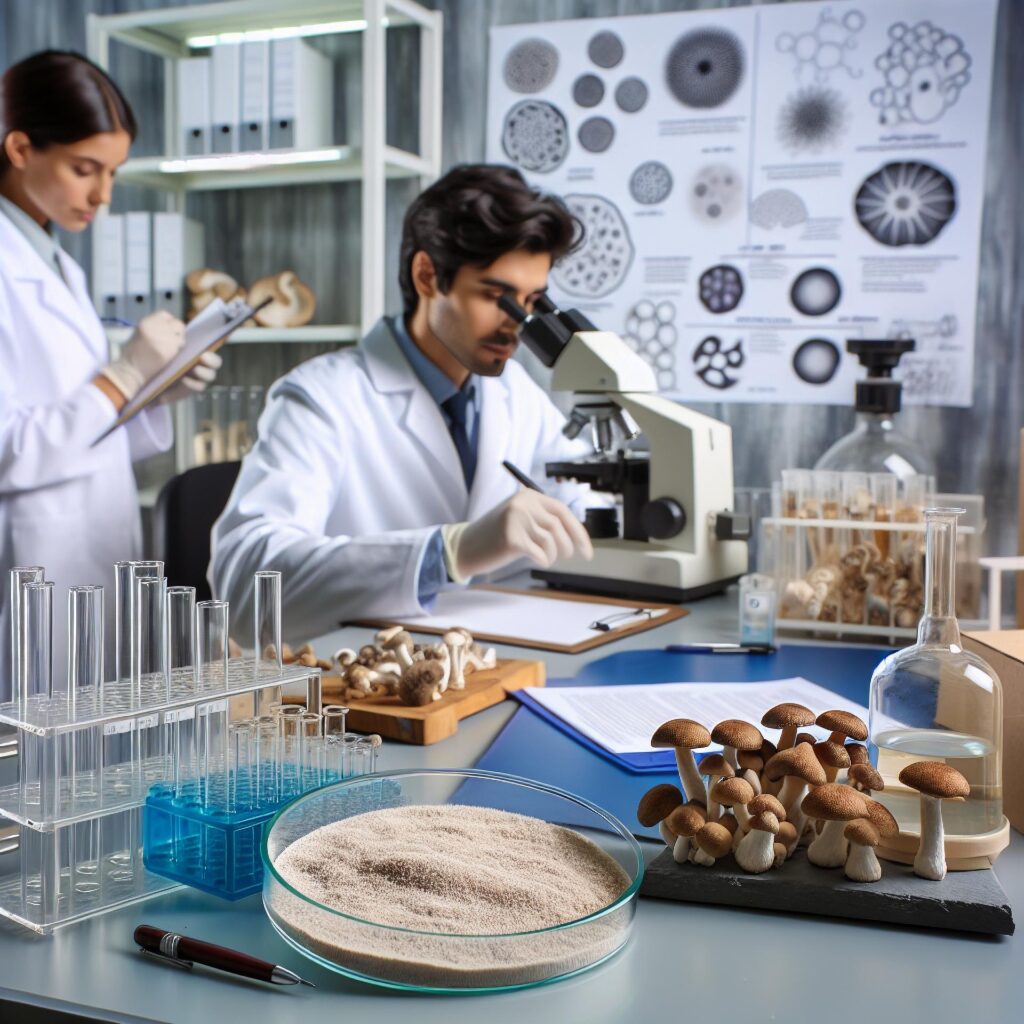Mushrooms are more than just culinary ingredients—they’re nature’s quiet overachievers. For centuries, cultures around the world have used mushrooms for nourishment and wellness. Today, modern science is catching up, offering a closer look at how certain mushrooms, including Agaricus blazei Murill (ABM), may support the body in remarkable ways.
So, what does the research say?
Mushrooms in Modern Research
In recent decades, mushrooms have emerged as key players in the field of nutritional science and functional medicine. Scientists are especially interested in the polysaccharides, beta-glucans, triterpenes, and antioxidants found in various species. These naturally occurring compounds are being studied for their potential effects on:
- Immune modulation
- Inflammatory balance
- Cellular protection
- Recovery and resilience
These aren’t just theoretical effects—many are being validated through laboratory, animal, and early human studies. Researchers are investigating how specific mushroom extracts may influence immune pathways, reduce oxidative stress, and support the body in adapting to challenges.
Some mushrooms, like ABM, contain a particularly broad range of these beneficial compounds—especially when extracted from the fruiting body using dual-extraction methods that preserve both water- and alcohol-soluble constituents. This kind of preparation mirrors traditional methods and aligns with many protocols used in clinical and laboratory research.
Highlights from the Research on ABM
Recent studies suggest that ABM fruiting body extract may support the body by:
- Encouraging a balanced immune response (without overstimulation)
- Helping modulate inflammatory processes
- Supporting recovery during periods of physical stress or medical treatment
In one animal model study, polysaccharides from ABM were shown to help reduce inflammation and regulate gut microbiota following injury.
Other researchers have explored how ABM extract interacts with immune cells in vitro, finding that it can stimulate beneficial cytokine production and enhance natural killer cell activity in supportive settings.
These findings help explain why ABM continues to be studied in the context of immune wellness, recovery, and whole-body resilience.
The Importance of Proper Sourcing
It’s not just about the mushroom species—it’s about how it’s grown, what part is used, and how it’s processed.
At Desert Forest Nutritionals®, we use only:
- The fruiting body (not mycelium)
- Mushrooms grown in Brazil using sustainable practices
- A dual-extraction method to ensure the full spectrum of active compounds is captured
This reflects the preparation used in many of the published studies. Our goal is to deliver a product as close as possible to what’s been studied—and traditionally used—for wellness support.
Next in the Series:
ABM in Context: How It Compares to Other Mushrooms
We’ll look at how Agaricus blazei Murill stacks up next to other popular mushrooms like reishi, lion’s mane, and shiitake—and what makes its nutrient profile truly unique.
Bibliography
- Zhao, M. et al. (2024). Polysaccharide Isolated from Agaricus blazei Murill Alleviates Intestinal Ischemia/Reperfusion Injury through Regulating Gut Microbiota and Mitigating Inflammation in Mice. J Agric Food Chem, 72(4), 2202–2213.
https://pubmed.ncbi.nlm.nih.gov/38247134/ - Hetland, G. et al. (2021). Can medicinal mushrooms have prophylactic or therapeutic effect against COVID-19 and its pneumonic superinfection and complicating inflammation? Scand J Immunol, 93(1), e12937.
https://pubmed.ncbi.nlm.nih.gov/32657436/
- Zhao, M. et al. (2024). Polysaccharide Isolated from Agaricus blazei Murill Alleviates Intestinal Ischemia/Reperfusion Injury through Regulating Gut Microbiota and Mitigating Inflammation in Mice. J Agric Food Chem, 72(4), 2202–2213.

